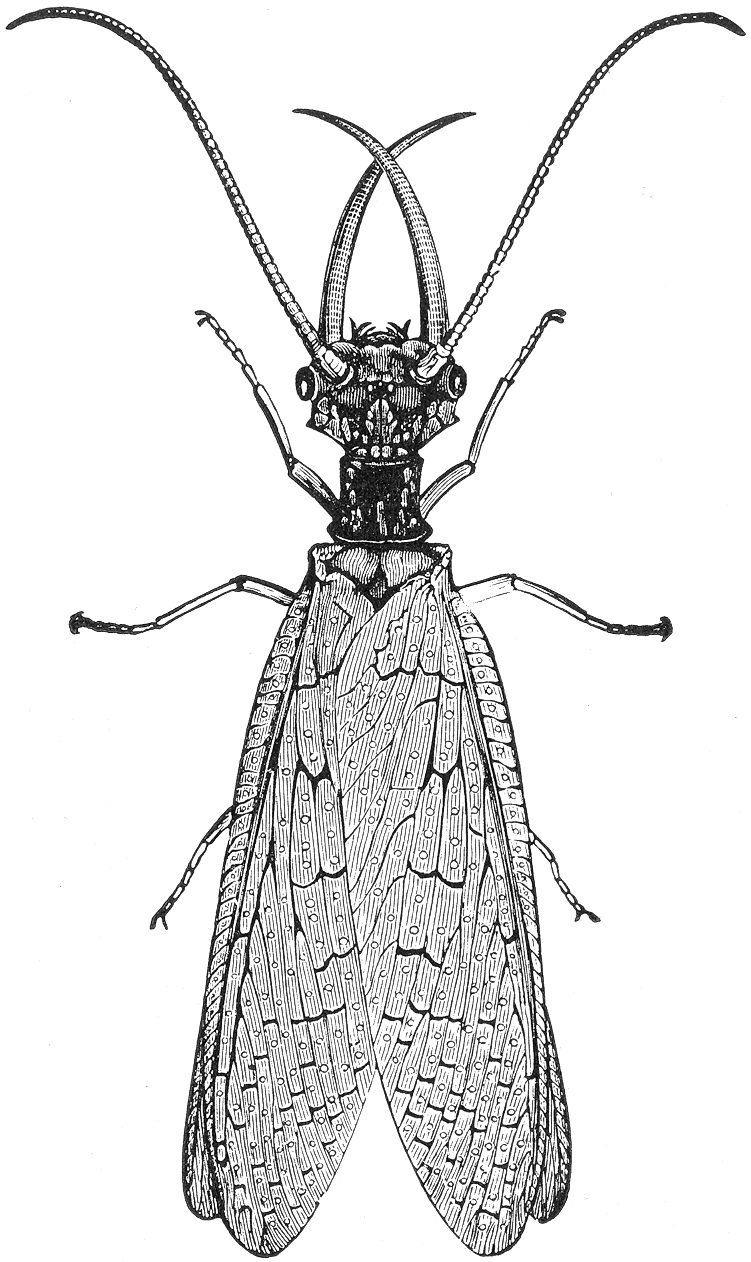|
| Query: Lined sole | Result: 6th of 7 | |
Dobsonfly (Family: Corydalidae, Genus: Corydalus) - Wiki
| Subject: | Dobsonfly (Family: Corydalidae, Genus: Corydalus) - Wiki
| |

| Resolution: 751x1262
File Size: 239262 Bytes
Date: 2007:09:20 23:43:08
Upload Date: 2007:09:20 23:46:47
|
Dobsonfly
From Wikipedia, the free encyclopedia
[Photo] Male Corydalus cornutus (dobsonfly). Illustration of a dobsonfly. The original caption read: Fig. 511.--Corydalis cornutus, hellgrammite, male. (From Riley.) Source: Hertwig, Richard (1909). A Manual of Zoology. New York: Henry Holt and Company. Date 2007-04-14. Author Richard Hertwig. License: public domain
The name dobsonfly refers to any species of the genus Corydalus (family Corydalidae). The most well-known of the numerous species is Corydalus cornutus, a long, dark-colored insect of North and Central America, that spends most of its life in its larval stage. The larvae of this and other species are called hellgrammites, live under rocks at the bottoms of lakes, streams and rivers, and prey on other insect larvae. Hellgrammites are used by many fishermen as bait, though this practice may stem, more than anything, from the challenge of catching a hellgramite without being bitten.
Though both male and female hellgrammites have short, sharp mandibles, those of the male adult dobsonfly are much bigger than the females' and are unable to harm humans, as they're so long and have such poor leverage that they're incapable of breaking the skin. They are used exclusively for grasping the females during mating. Female dobsonflies, however, retain the short, powerful pincers they had as larvae, so they can inflict painful--albeit nonvenomous--bites, which can draw blood. When threatened, they will raise their heads and spread their jaws menacingly. They also possess an irritating, foul-smelling anal spray, as a last-ditch defense.
After a few years of living and growing underwater, the larvae crawl out onto land and pupate. They stay in their cocoons over the winter and emerge only to mate. Upon emerging, they live for only a few days. While not generally believed to eat during their adult stage, some captive, female specimens have been observed with their heads burrowed into blackberries.
Both male and female dobsonflies can reach lengths up to five inches, measured from the tips of their pincers to the tips of their four wings, which, when not in use, are folded along the length of their walkingstick-like bodies. Their wingspans can be twice as long as their body length, and the wings themselves are densely lined with intersecting veins. As a whole, their bodies are tough and robust, giving them excellent chances for survival, both as larvae and as adults.
They can generally be found from late spring into the middle of summer, preferring to remain near bodies of water, particularly the ones from which they came, because their sole purpose once they emerge as adults is to mate, deposit their eggs near the water (often on overhanging vegetation), then die. They are primarily nocturnal, and like most aquatic insects, are commonly attracted to bright lights.
http://en.wikipedia.org/wiki/Dobsonfly
| The text in this page is based on the copyrighted Wikipedia article shown in above URL. It is used under the GNU Free Documentation License. You may redistribute it, verbatim or modified, providing that you comply with the terms of the GFDL. |
|
^o^
Animal Pictures Archive for smart phones
^o^
|
|

